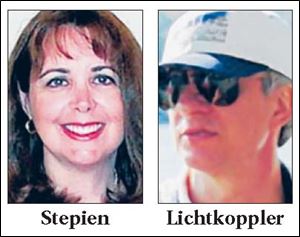
Meeting on lakes spotlights UT's gains
5/18/2009
To the layman, a conference being held at the University of Toledo this week may appear to be just the latest in a confusing collection of Great Lakes events.
But to those who intimately track the science behind the Earth's largest source of fresh surface water, this week's International Association of Great Lakes Research conference says a lot about UT's ambition to become an academic powerhouse for environmental studies.
It also illustrates how much more value northwest Ohio has started to place on the environment after years of neglect, from more fish and algae research to being reinvigorated - with the university's help - by solar power and other forms of alternative energy that can help the lakes, officials said.
Carol Stepien, the conference chairman and director of UT's Lake Erie Center on Bayshore Road in Oregon, said the conference is like landing the Super Bowl of Great Lakes research.
Some 650 people, including many of the top Great Lakes scientists in the United States and Canada, are expected to attend. At least 538 scientific papers are to be presented, in addition to public forums, field trips, and even a little fun around town that can provide a short-term boost to the local economy.
"It's certainly going to put Toledo on the map," said Frank Lichtkoppler, an Ohio Sea Grant extension agent and professor. "For that week, the center of Great Lakes science is Toledo."
The conference is in its 52nd year, but has never been held in Toledo.
It is one of the Great Lakes region's three major international gatherings that occur once every two years, and the one that has the greatest emphasis on science. The U.S.-Canada International Joint Commission's biennial and the U.S. Environmental Protection Agency's State of the Lakes Ecosystem Conference are the other two, both weaving in more public policy.
"It's a tremendous opportunity and showcase event for us," Ms. Stepien said.
This is only the fourth time the conference has been in Ohio.
Ohio State University was host to it in 1973 and 1981, and Case Western Reserve University was host in 1999.
At first glance, it appears surprising that Toledo had not been the host.
Western Lake Erie is the warmest, shallowest, and most biologically productive part of the Great Lakes.
More fish are spawned in this area of the Great Lakes than in the other lakes combined, with the Maumee River - the largest inland tributary that flows into a Great Lake - serving as one of the region's top nursery grounds.
The Toledo area also represents a confluence of many issues.
Those include how millions of people between Detroit and Cleveland use the shoreline, how automobile manufacturers, oil refineries, power plants, and other types of heavy industry have affected the lakes, and how tourism, recreation, shipping, and agriculture fit into the mix.
Daryl Moorhead, a conference co-chairman and UT environmental sciences professor, said Toledo "really sits on the aorta of the Great Lakes."
Many ecological changes, from the impact of zebra mussels to the proliferation of toxic forms of algae, often rear their heads first in western Lake Erie because of its ecological conditions, he said.
But he said it's probably no accident Toledo never played host to the conference before now.
Environmental studies did not become one of UT's priorities until the early 1990s, he said.
Flashback to the 1970s:
Even after the first Earth Day, the march on Washington by those who demanded a cleaner environment and the movement that ultimately resulted in the creation, in the current era, of pollution laws, UT had only two faculty members who focused on environmental studies.
Today, it has an environmental studies department of 22 faculty members. It also has four or five environmental engineers and professors in disciplines as far-reaching as philosophy and women and gender issues who specialize in the environment. It has another faculty member versed in environmental policy and recently hired someone whose expertise is in environmental economics, Mr. Moorhead said.
The environmental sciences and public health departments also provide a special program at UT's medical school, the former Medical College of Ohio.
UT's law school also has its own Great Lakes legal institute.
"This is truly a broadly based initiative at the University of Toledo," Mr. Moorhead said.
He said the momentum began after U.S. Rep. Marcy Kaptur (D., Toledo) secured funding for the $7 million Lake Erie Center, one of the only laboratories where lake water is pumped directly through a laboratory for real-time research. It was dedicated in 1998, although it opened to researchers well before that.
"Until that time, it really didn't make that much sense to host a meeting. We didn't have the scientists," Mr. Moorhead said.
"We've literally exploded onto the Great Lakes program."
Ms. Stepien, a member of the research association's board from 2004 to 2008, said she made it her mission to have UT host the conference when she was hired to be the Lake Erie Center's second director in 2004.
She said she organized the event with the help of a 30-member planning committee.
UT is submitting 50 of the 500-plus scientific papers at the conference, the most of any university, she said.
Mr. Moorhead said he left a tenured faculty job at Texas Tech University in early 1999 because of the possibilities he saw at UT with its new Lake Erie Center, as well as the federal government's renewed interest in the lakes after having "grossly ignored" them for years.
"As an ecologist, I wanted to be part of it," he said.